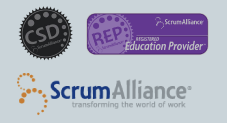Invest in Automated Tests
I’ve built my career on writing software to automate other industries. I’ve learned a lot about a range of disciplines and businesses, how they operate, and very often their “secret sauce” can be embodied in the software that they write to run their businesses. I believe that the quality of our build and the quality …
Continue reading “Invest in Automated Tests”
Read MoreAvoid Branching
I’m going to go out on a limb here (pun intended) and say that the purpose and benefit of continuous integration have to do with integrating our code continuously. That makes sense but I see so many teams use their CI systems to isolate their code in branches and prevent the code from being integrated …
Continue reading “Avoid Branching”
Read MoreIntegrate Continuously
This is the first post in a new series of posts called Seven Strategies for Burning Down Risk based on the section with the same name in my book, Beyond Legacy Code: Nine Practices to Extend the Life (and Value) of Your Software. Of all the agile technical practices the first and most important one …
Continue reading “Integrate Continuously”
Read MoreKeep Stories Testable
I want to conclude this collection of seven blog posts on strategies for story splitting with one of the most important aspects that a story should include, which is the ability to be tested. Just like testable code, testable stories are essential. When we make stories testable, we find that many of their other qualities …
Continue reading “Keep Stories Testable”
Read MoreKeep Intentions Singular
Throughout this series of blog posts on story splitting, I’ve stressed the need to make our stories as small as possible. The way to do this is to keep a story focused on a single outcome for a single type of user with a single purpose. Keeping the intentions of a story singular helps us …
Continue reading “Keep Intentions Singular”
Read MoreMinimize Dependencies
In 2020, I finished a series of 72 blog posts that expanded on the first set of “Seven Strategies…” for each practice in my book Beyond Legacy Code: Nine Practices to Extend the Life (and Value) of Your Software. I included two sets of “Seven Strategies…” in my book and so I am expanding on the second set …
Continue reading “Minimize Dependencies”
Read MoreSplit Stories on Acceptance Criteria
In 2020, I finished a series of 72 blog posts that expanded on the first set of “Seven Strategies…” for each practice in my book Beyond Legacy Code: Nine Practices to Extend the Life (and Value) of Your Software. I included two sets of “Seven Strategies…” in my book and so I am expanding on the second set …
Continue reading “Split Stories on Acceptance Criteria”
Read MoreIterate on Unknowns Until They are Understood
In 2020, I finished a series of 72 blog posts that expanded on the first set of “Seven Strategies…” for each practice in my book Beyond Legacy Code: Nine Practices to Extend the Life (and Value) of Your Software. I included two sets of “Seven Strategies…” in my book and so I am expanding on the second set …
Continue reading “Iterate on Unknowns Until They are Understood”
Read MoreBreak Complex Stories Down into Knowns and Unknowns
In 2020, I finished a series of 72 blog posts that expanded on the first set of “Seven Strategies…” for each practice in my book Beyond Legacy Code: Nine Practices to Extend the Life (and Value) of Your Software. I included two sets of “Seven Strategies…” in my book and so I am expanding on the second set …
Continue reading “Break Complex Stories Down into Knowns and Unknowns”
Read MoreBreak Compound Stories Down into Components
In 2020, I finished a series of 72 blog posts that expanded on the first set of “Seven Strategies…” for each practice in my book Beyond Legacy Code: Nine Practices to Extend the Life (and Value) of Your Software. I included two sets of “Seven Strategies…” in my book and so I am expanding on the second set …
Continue reading “Break Compound Stories Down into Components”
Read MoreUse Acceptance Criteria for Stories
I’m wrapping up this series of blog posts based upon Seven Strategies for Writing Better Stories from my book, Beyond Legacy Code: Nine Practices to Extend the Life (and Value) of Your Software, with my last strategy–use acceptance criteria. There are many ways to define or break down and split up user stories. Generally speaking, …
Continue reading “Use Acceptance Criteria for Stories”
Read MoreThink About Edge Cases
Continuing my series of posts based on Seven Strategies for Writing Better Stories from my book, Beyond Legacy Code: Nine Practices to Extend the Life (and Value) of Your Software, here is the next strategy. Although stories are composed of three elements that include WHAT the feature is, WHO the feature is for, and WHY the …
Continue reading “Think About Edge Cases”
Read More